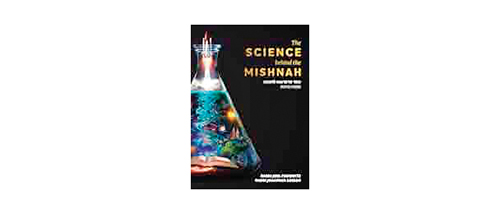
Highlighting: “The Science Behind the Mishnah” by Rabbi Joel Padowitz and Rabbi Jonathan Sassen. Mosaica Press. 2024. 318 Pages. ISBN-10: 1957579978.
A friend recently told me that his son came home from pre-K proclaiming that it’s getting dark because the sun goes around the Earth and now, at sunset, the sun is going behind us. Lest he think it was just his son’s youthful imagination, he saw that the teacher’s weekly newsletter shared that they learned about outer space, including about how the sun orbits the Earth! My friend wasn’t sure how to approach the situation. If only the teacher spoke English, an excellent solution would be to gift her a new, groundbreaking work, “The Science Behind the Mishnah” (Mosaica Press, 2024). Even better, he could surreptitiously tuck a thank you card into chapter six, titled “The Apparent Movement of the Sun.”
Rabbis Joel Padowitz and Jonathan Sassen’s enlightening book masterfully bridges the divide between Torah study and scientific understanding. This comprehensive volume focuses on Tractate Berachot, illuminating the natural phenomena referenced throughout the text with modern scientific explanations.
The book covers an impressive range of topics, from the chemistry of wine fermentation and the intricacies of static electricity, up to the astronomy behind meteors and comets, and much more. The authors excel at distilling complex information into understandable explanations, supported by hundreds of high-quality photographs, diagrams and infographics. Each subject is presented with remarkable clarity, making complex scientific concepts accessible to readers of middle school level and above.
That said, don’t be fooled into thinking it’s only a book for teens. For many of us adults lacking an extensive background in science, the book is a gold mine of knowledge just waiting to be discovered. And with parent involvement, younger children will love it, too. My second grader is about to finish Tractate Berachot at school, and the fascinating phenomena unpacked in “The Science Behind the Mishnah” are a great resource to match his natural curiosity about the world and connect it back to Torah study. To modify Mark Twain’s famous pronouncement, truth is cooler than fiction.
The authors’ work demonstrates how scientific understanding can deepen one’s appreciation of the Mishnah and, by extension, Hashem’s creation. This approach aligns with Maimonides’ teaching that love of Hashem can be achieved through understanding both Torah and the natural world. Equally important, while many scientific discoveries were certainly yet unknown to Chazal, it clearly emerges that the Mishnaic sages were quite knowledgeable scientifically.
The authors bring extensive credentials to their work. Rabbi Padowitz, a Harvard and Bar Ilan graduate, has spent over two decades in Jewish education. Rabbi Sassen, with an Oxford degree in metallurgy and material science, brings deep scientific expertise from his work as chief technology officer at Epsilor-Electric Fuel.
One aspect I would love to see more of in future volumes is integration between the Torah sources and scientific phenomena. Sometimes the chapters are purely scientific. For example, in the chapter on thunder and lightning, it would be quite illuminating to see a discussion of Rashi’s two explanations regarding how thunder works (Berachot 58b) and whether they line up with current scientific understandings.
For all its intellectual rigor, though, the book stands out for its outstanding production quality. The layout, graphics and typography are excellent, making the book user-friendly and attractive. It is also complemented by a comprehensive 24-page index and detailed glossary of scientific terms, all of which make it an invaluable reference work. The flip side of these strengths is that it can give the impression of a science textbook, which might be intimidating for the average reader. In fact, there is even a website that contains suggested curricula for teachers, and it indeed could make for an excellent resource for frum schools.
While primarily focused on Tractate Berachot, this volume sets a high standard for future works in what one hopes will be an ongoing series. Hope? It’s not just hope—their website promises that a new volume on Tractate Shabbat is underway!
“The Science Behind the Mishnah” (Mosaica, 2024) is available in Jewish bookstores worldwide. Learn more at www.sciencebehindthemishnah.com
Chaim Goldberg has semicha from RIETS, a graduate degree in child clinical psychology from Hebrew University, and he enlisted in the IDF this summer through the Shlav Bet Haredi program. In civilian life, Rabbi Goldberg teaches Torah at various yeshivot/seminaries and practices psychology. On the side, he writes for Jewish publications across the globe and at chaimgoldberg.substack.com.








